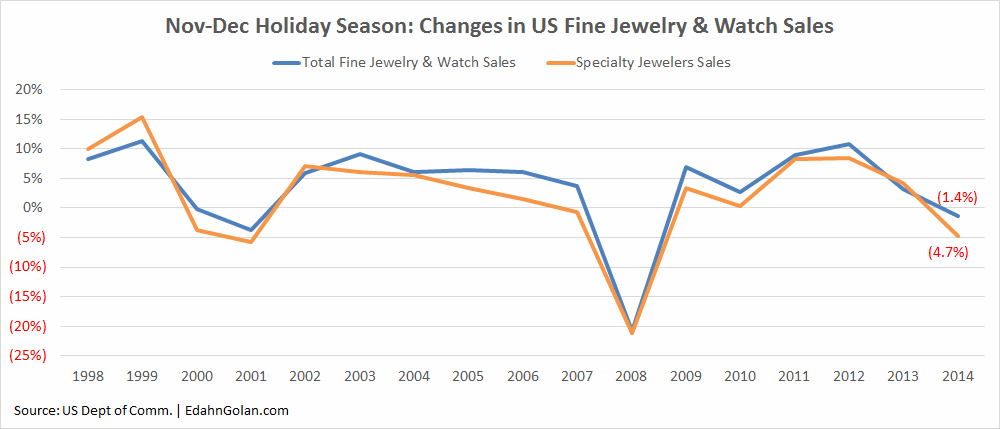After the 2008 financial crash, a De Beers research study found that consumers continued to spend during the holiday season, but more cautiously. They bought fewer items, yet were willing to spend more per item – if it had long lasting value. They called this trend “less for more,” and consumers were indeed willing to buy nice diamond jewelry items.
The last Holiday Season turned out to be a “more for less” one, to paraphrase De Beers, with consumers buying more lower price-point jewelry items, instead of fewer items at higher price points.
Despite the record level of expenditure and sales, the 2014 Holiday Season hit a snag, and overall jewelry and watch sales declined 1.2% year-over-year to $21.7 billion. The reason for the decline was a shift to lower price-point items and a continued shift in making jewelry purchases prior to the Holiday Season.
This, in a nutshell, is the story of the 2014 Holiday Season, and everything since then because so far, after a weak Valentine’s Day and Mother’s Day, there are no signs that this trend is changing.

Choosing the proverbial bird in the hand, overall fine jewelry sales are rising, breaking record sales for a second year in a row. At an average expenditure of $612 per household, another record, jewelry remains a top interest for consumers. The challenge the jewelry industry at large faces is to drive interest in finer diamond jewelry items, while improving its margins in the value chain pipeline.
These days, a number of diamond miners are forming a group that will address, among other topics, marketing. If this materializes, generic diamond promotion might be what turns back the tide and revives interest in higher price-point diamond jewelry.
When De Beers went at it alone with the ‘diamond is forever’ campaign, it did wonders for demand. However, an attempt by a group of miners in 2009, International Diamond Board (IDB), was unsuccessful. No one knows if the current attempt to cooperate will succeed, what is known is that such an effort could make a big difference in regaining “less for more,” or even better, more for more.

